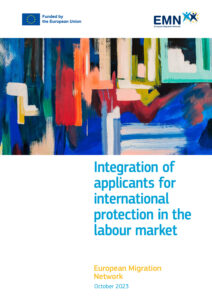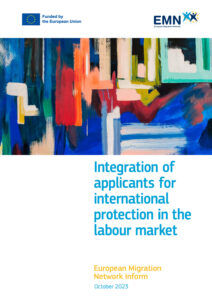This EMN study offers an analysis of how EMN Member Countries are supporting the integration of applicants for international protection in the labour market. Labour market integration is a crucial aspect of migrant integration and successful engagement in society. This is not only due to its role in providing economic independence but also because it has an impact on the health and overall well-being of the migrants. The importance of migrant integration in the labour market is notably more urgent considering the current labour and skills shortages across EMN Member States.
Over the period from 2017 to 2022, there were over three million applications for international protection, with the highest number recorded in 2022. The majority of these applicants were of working age, indicating a potential labour force for EMN Member Countries’ job markets. According to the 2023 economic survey conducted by Eurochambres, European businesses are facing significant challenges concerning labour and skill shortages. As a result, there may be an increased reliance on individuals from third countries to address the projected shortages.
The ability of international protection applicants to enter the job market is governed by the revised Reception Conditions Directive (2013/33/EU), and according to Article 15(1) of this directive, EU Member States are obligated to ensure that applicants are granted access to the labour market within nine months of submitting their international protection application. Once the waiting period concludes, most of EMN Member Countries provide access to the labour market, typically through a work permit or an alternative form of authorisation. Moreover, most EMN Member States allow access to the labour market through self-employment.

